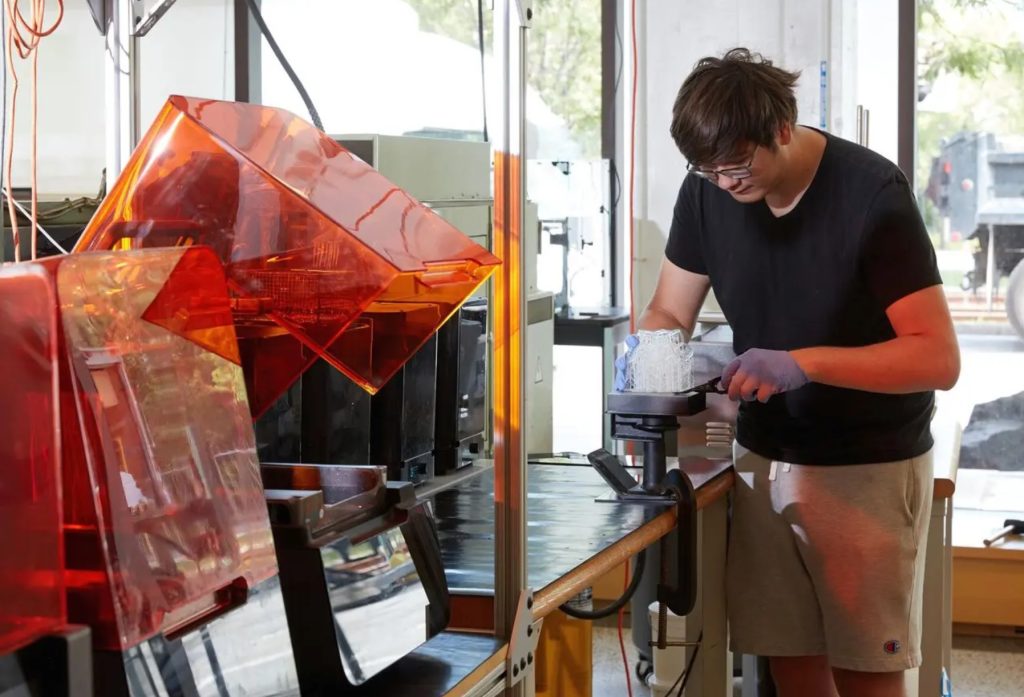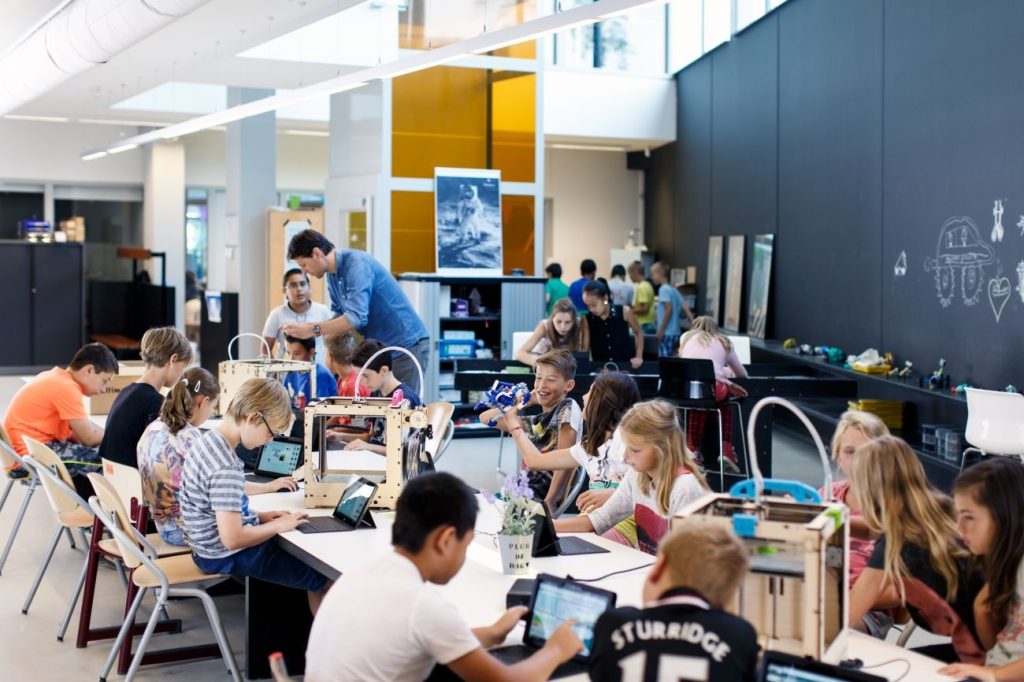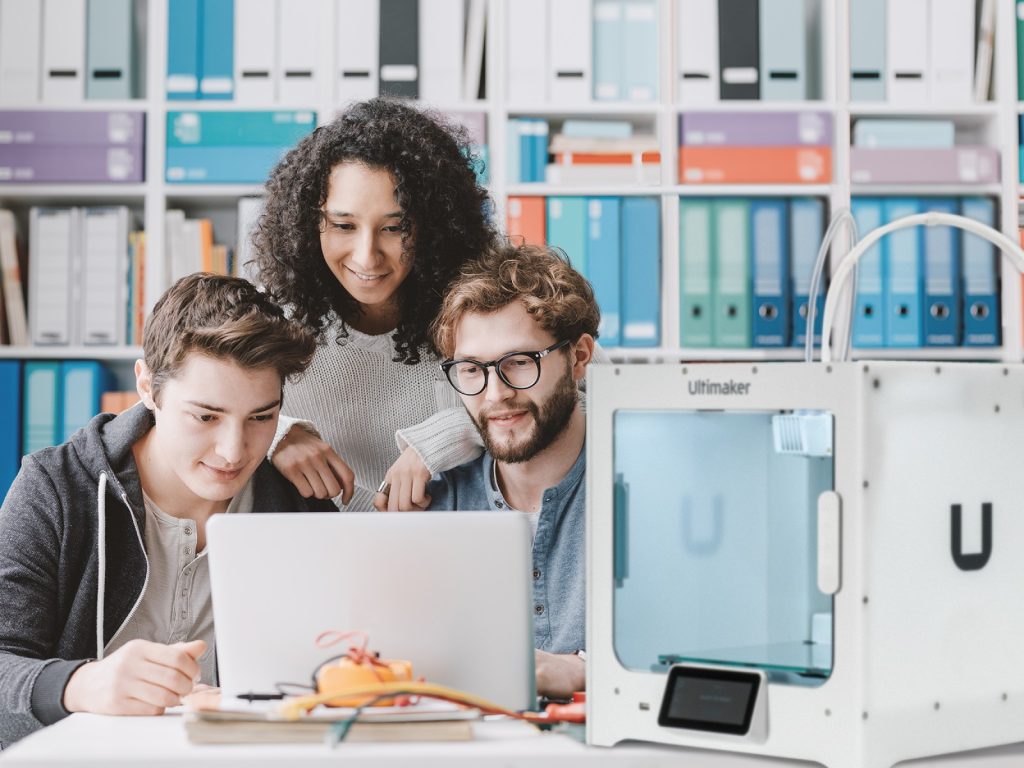3D design technology can provide students with an invaluable tool to unleash their creativity and explore endless possibilities. With the integration of Computer-Aided Design (CAD) software and 3D modelling tools, such as those offered by Autodesk, students can create intricate 3D models, renderings, animations, and simulations to bring their learning to life. This article explores the transformative power of 3D design in education, highlighting its benefits and real-world applications across various fields.
3D Printing in Education – the Key Benefits
The integration of 3D printing in education offers numerous benefits for students. Here are eight key advantages of incorporating 3D design technology, specifically for 3D printing, into the educational environment:
Enhanced Creativity and Critical Thinking
By introducing students to 3D design and printing, educational institutions foster creativity and critical thinking in subjects as varied as Design and Technology or chemistry, to humanities like History or Geography.
Students are encouraged to bring their ideas to life, explore innovative solutions, and develop problem-solving skills. Through 3D software, students can prototype multiple iterations of their designs, experiment with different shapes and features, and push the boundaries of their creativity.
Active Learning Experience
The hands-on nature of 3D printing engages students actively in the learning process. It enables them to transform abstract concepts into physical objects, facilitating a deeper understanding of complex ideas. For example, as students iterate through the design, prototyping, and refining phases, they actively participate in the learning journey, testing hypotheses, analysing results, and gaining practical experience.
A great example is a student working through the iterative process of designing, prototyping, and refining their models. They can test hypotheses and analyse the results while actively participating in the learning journey. For example, Biology students could use 3D printers to create models of cells, organs, or even entire organisms, Earth Science students could print replicas of fossil samples or geological formations, and Physics or Engineering students could create models of complex gear mechanisms or pulley systems. The possibilities are endless.
Interdisciplinary Learning Opportunities
3D design technology can bridge the gap between various disciplines, allowing students to apply their knowledge from math, science, art, and design in creating and testing 3D models. This promotes interdisciplinary learning, fostering connections between different fields.

For instance, students can utilise 3D modelling software to explore geometric shapes and spatial relationships, applying their understanding of angles, measurements, and proportions to create accurate and visually appealing models.
Improving Spatial Reasoning and Visualisation Skills
Working with 3D design and printing requires students to think spatially and visualize objects in three dimensions. This enhances their spatial reasoning skills, which are crucial in fields like architecture, engineering, and design. By manipulating digital models and observing their physical manifestations, students develop a solid understanding of how objects fit together in space, which can be helpful for fields or subjects like sculpture, industrial design, virtual reality development, medical imaging, and game design.
Real-World Application and Career Readiness
Introducing 3D printing in education exposes students to the technology used in industries such as manufacturing, architecture, engineering, and product design.

By gaining practical skills and familiarity with industry-standard tools, students are better prepared for future careers. Students can become adept at additive manufacturing techniques, enabling them to contribute to innovative manufacturing practices and product development across various industries.
Personalised Learning and Customisation
3D printing empowers teachers to personalize educational materials, creating customized learning aids, models, and prototypes tailored to individual student needs. Every student learns differently, and each will have individual strengths and weaknesses regarding a certain topic. Students can print themselves individualised learning tools or memory aids. This enhances the learning experience and accommodates diverse learning styles.
Additionally, the availability of different software features, tools, and tutorials allows students of all skill levels to engage with the technology, ensuring steady progress across the class.
Collaboration and Communication Skills
3D printing often involves group projects, promoting collaboration, effective communication, and the sharing of ideas. Working together in teams fosters teamwork, communication skills, and the ability to collectively work towards a common goal.

During a 3D printing project, students will need to collaborate on designing and fabricating complex models or prototypes, leveraging each team member’s expertise in design, engineering, and materials selection. Projects like these act as teamwork exercises, allowing students to develop valuable transferable skills that will benefit them throughout their working lives, regardless of career path.
Future-Proof Skills
As 3D printing continues to advance and find applications in various industries, incorporating this technology in education equips students with future-proof skills. Students develop digital literacy, technological competence, and an understanding of the possibilities and limitations of 3D design. These skills position them for success in an evolving job market, particularly in highly competitive industries.
3D skills learnt at college and university also come in handy in everyday life. Students can apply their knowledge to create personalised products, prototypes, or solutions for their projects or hobbies. This empowers them to be self-reliant, resourceful, and inventive individuals who can bring their ideas to life using 3D printing technology.
Summing up
3D design technology and printing in education offer numerous benefits for students. These include:
- Enhanced creativity and critical thinking.
- Hands-on learning experiences.
- Interdisciplinary learning opportunities.
- Improved spatial reasoning and visualisation skills.
- Real-world application and career readiness.
- Personalised learning and customisation.
- Collaboration and communication skills development
As you can see, the benefits of 3D printing in education include the enhancement of learning in specific subjects, as well as the development of valuable transferable skills like problem-solving ability, time management, team working, and spatial reasoning.
Find out more
Interested in rolling out 3D printing in your school, college, or university? Call us on 01765 694 007 or email [email protected].
Top image credit: Formlabs.




